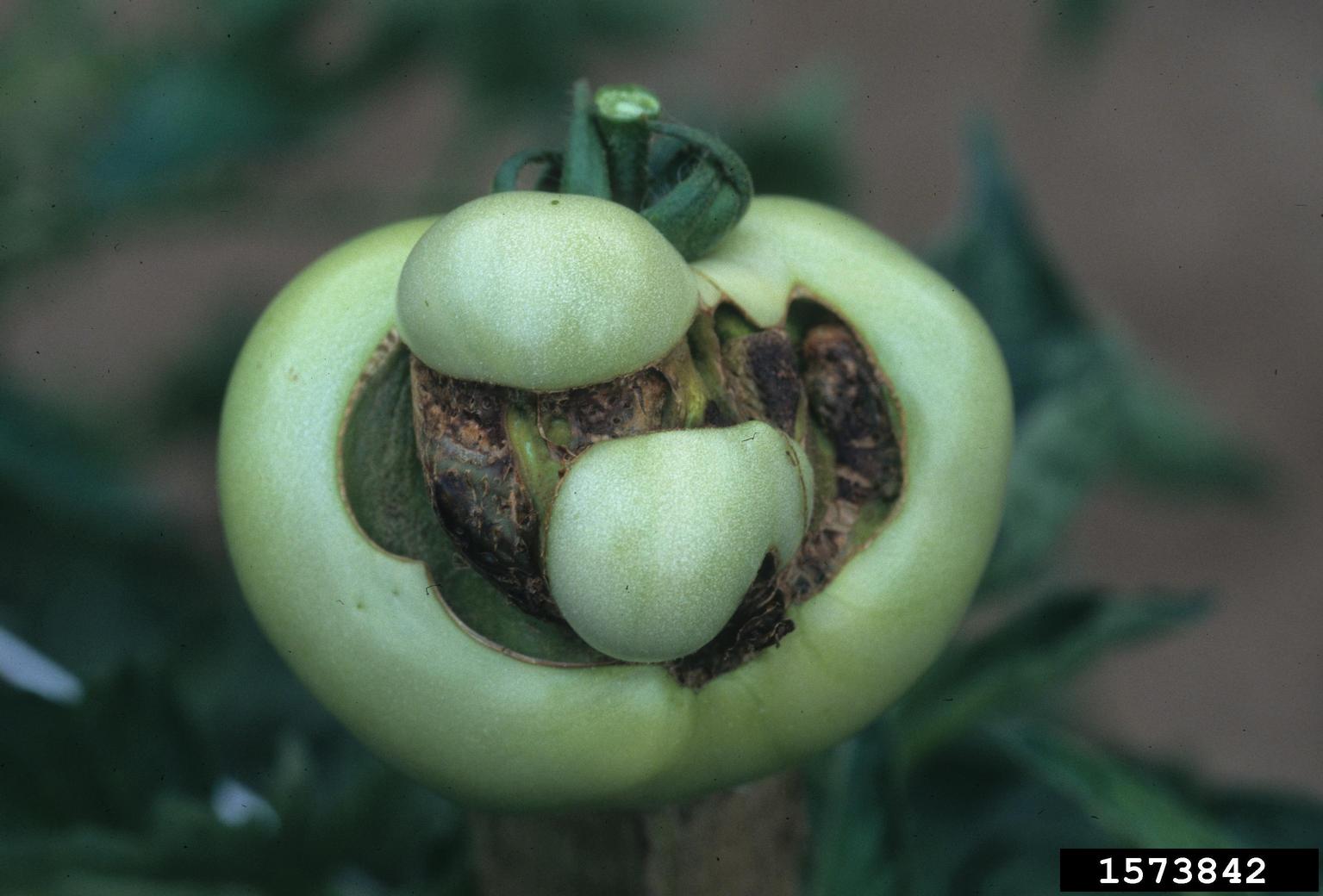Catfacing Fruit Deformity: Learn About Catfacing On Tomatoes

A number of maladies can plague tomato fruit, whether grown for commercial production or in the home garden. If you've noticed abnormal cavities pitted with scar tissue and swelling, your prized tomato may be afflicted with catfacing fruit deformity. What is catfacing on tomatoes and how can it be treated? Read on to learn more.
What is Catfacing?
Tomato catfacing is a physiological disorder of tomatoes that results in the gross deformity discussed above. So-called since the abnormal cracking and dimpling on tomatoes, peaches, apples, and even grapes, looks somewhat akin to a small cat's face. Simply put, it is the abnormal development of plant tissue affecting the ovary or female sex organ (pistilate), which results in the flower, followed by the fruit development becoming malformed. The exact cause of catfacing on tomatoes is uncertain and could be caused by any number of factors but seems to center around unfavorable growing conditions. Temperatures below 60 F. (16 C.) for a number of successive days when plants are immature -- about three weeks prior to blooming -- appear to coincide with tomato catfacing fruit deformity. The result is incomplete pollination, which creates the deformity. Physical damage to the blossom can also cause catfacing. It's also more prevalent on large-fruited varieties, like beefsteaks or heirlooms. I see it on my heirlooms grown in the Pacific Northwest. Two strikes against me, I guess. Additionally, catfacing may appear if the fruit has exposure to herbicides containing phenoxy. Excess nitrogen levels in the soil media can also aggravate the issue as well as aggressive pruning. Thrips, tiny slender insects with fringed wings, may also contribute as an origin for catfacing. Plants that are infected with Tomato Little Leaf are also susceptible to tomato fruit catfacing deformity.
How to Treat Catface Deformities
As to how to treat catface deformities, little can be done to control the abnormality. Proper growing practices revolving around monitoring temperature, overt pruning, and nitrogen levels in soils should be accomplished. Also, avoid the use of hormonal herbicides and the potential drift that may accompany their use. Finally, grow only varieties that historically have no issue with catfacing disorder; and in the case of Little Leaf infection, prevent the soil from becoming sodden by irrigation control and well-draining soil. Although fruit puckered by catface deformity isn't saleable at the commercial level, it doesn't affect the taste and can be safely eaten.
Gardening tips, videos, info and more delivered right to your inbox!
Sign up for the Gardening Know How newsletter today and receive a free copy of our e-book "How to Grow Delicious Tomatoes".

Amy Grant has been gardening for 30 years and writing for 15. A professional chef and caterer, Amy's area of expertise is culinary gardening.
-
 12 Lush Alternatives To A Lawn For Sustainable Spaces
12 Lush Alternatives To A Lawn For Sustainable SpacesAlternatives to a lawn are beautiful and also beneficial to your local ecosystem and its pollinators. Explore our top picks for plants to replace grass.
By Tonya Barnett
-
 Types Of Tomatoes Explained: Explore The Many Wonderful Shapes, Colors, Flavors, & Best Uses
Types Of Tomatoes Explained: Explore The Many Wonderful Shapes, Colors, Flavors, & Best UsesThe world of tomato varieties is vast and fascinating. Learn about the key types to grow in your garden, tailored to your preferences and space.
By Amy Grant